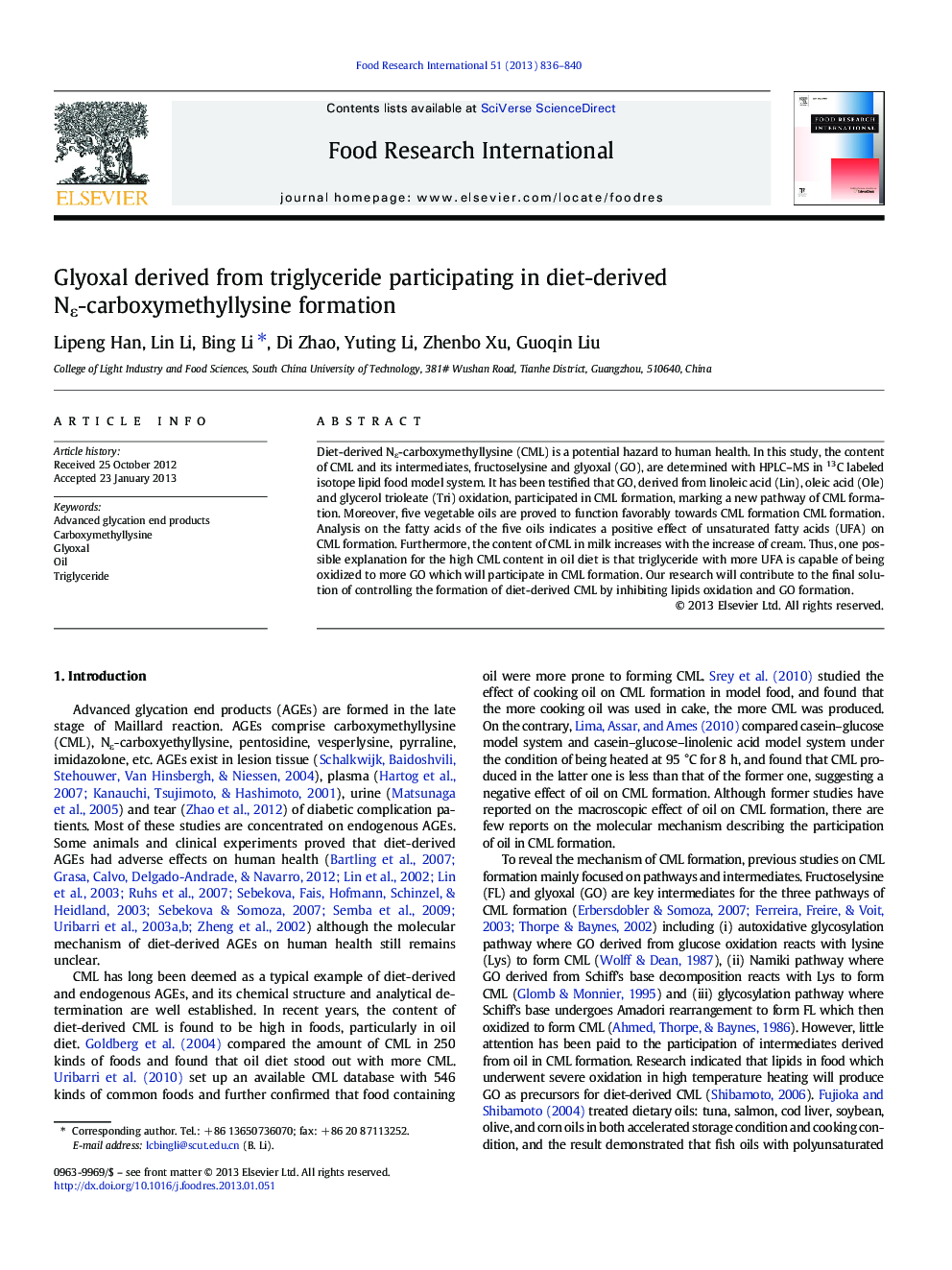| Article ID | Journal | Published Year | Pages | File Type |
|---|---|---|---|---|
| 6398097 | Food Research International | 2013 | 5 Pages |
Diet-derived Nε-carboxymethyllysine (CML) is a potential hazard to human health. In this study, the content of CML and its intermediates, fructoselysine and glyoxal (GO), are determined with HPLC-MS in 13C labeled isotope lipid food model system. It has been testified that GO, derived from linoleic acid (Lin), oleic acid (Ole) and glycerol trioleate (Tri) oxidation, participated in CML formation, marking a new pathway of CML formation. Moreover, five vegetable oils are proved to function favorably towards CML formation CML formation. Analysis on the fatty acids of the five oils indicates a positive effect of unsaturated fatty acids (UFA) on CML formation. Furthermore, the content of CML in milk increases with the increase of cream. Thus, one possible explanation for the high CML content in oil diet is that triglyceride with more UFA is capable of being oxidized to more GO which will participate in CML formation. Our research will contribute to the final solution of controlling the formation of diet-derived CML by inhibiting lipids oxidation and GO formation.
⺠We investigate carboxymethyllysine formation in lipid food model system. ⺠We prove a new pathway for carboxymethyllysine formation from lipid oxidation. ⺠Glyoxal derived from lipid oxidation participates in carboxymethyllysine formation.
